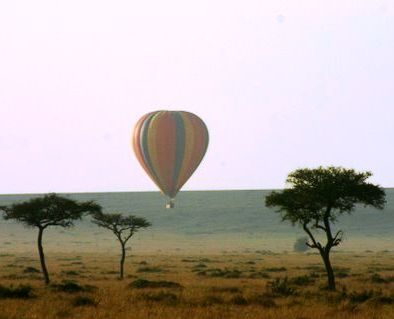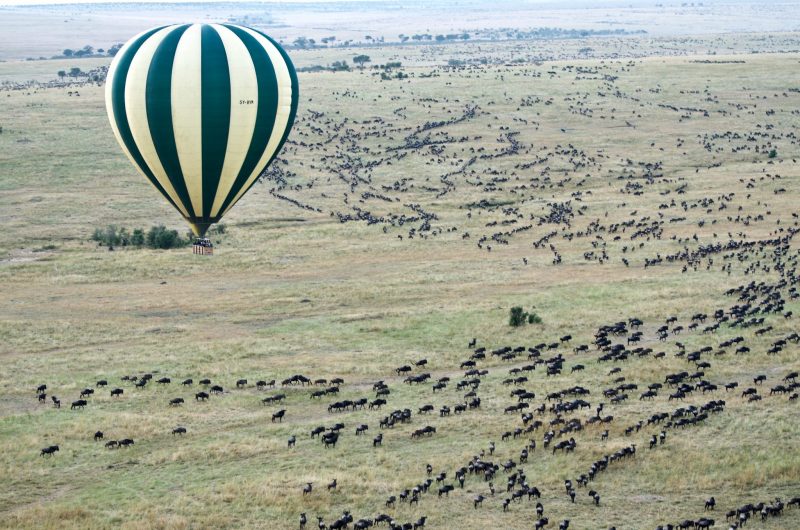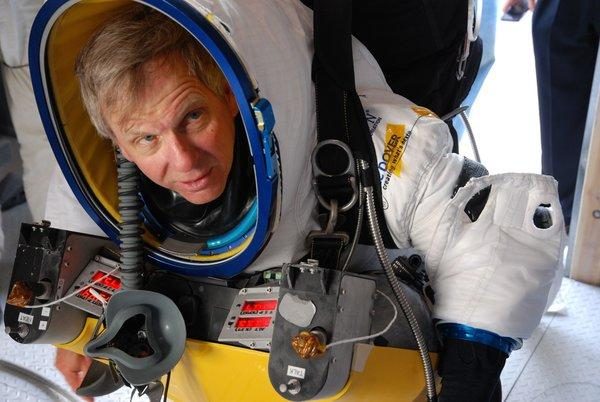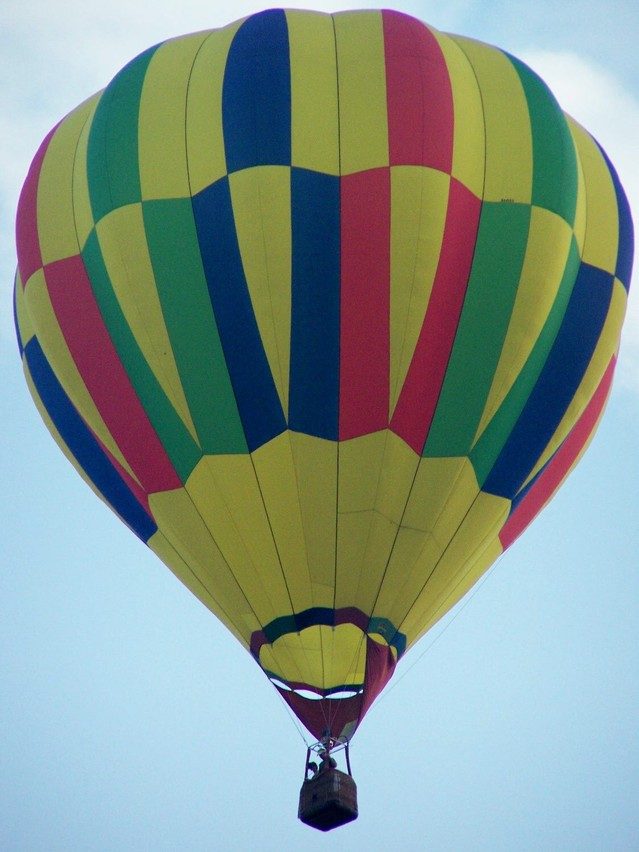Travel To Kenya To Enjoy Balloon Safaris
Advent of ballooning
The compulsion to fly high in the distant skies started off in Paris. On the 21st of November 1783, 2 French pilots rose 3,000 feet in a balloon. The Montgolfier brothers created it. Movingly, it entered the Guinness book of world records as the 1st manned hot-air balloon flight in the story of human kind, which lasted 25 minutes over 9 km. Therefore, it is fair to point out that on that day, the 1st chapter of flying history started. It marked the onset of the flight trade that is today in its most advanced form.
Early days
Hot-air balloons have come a long since that early days of the 18th century and have been put to use for varied uses from private and trade to army. Before the public started using it, the noble and the royals used hot-air balloons. And they used it as a status symbol. And some have even used it to settle disputes. One such story is stranger than any others. It involves 2 men of nobility. But 1st a little note on the story of such duels.
Weird duels
Throughout the history of all nations, people have took part in weird and strange fights to settle disputes. The parties spend a long time and much energy plotting against each other. They also plot the manner in which to conduct such spars. Those with an exotic ideal of honour have chosen to settle matters of contempt and disputes with harsh duels. Their penchant for drama gives them a laser sharp focus to carry out the heroic deeds. A sense of daring has such people right at the nick of time making all else wholly oblivious. There are plenty of stories of a hot-headed voyager crossing 7 seas to beat his or her foe. Poets record the saga of a jilted lover taking offence at the advances to a loved one by a rival. And a person with a big ego feeling slighted at an charge has chosen the duel to right the problem. Sanity and common sense give way to death or a glory stance. Perhaps their psyche becomes trained to believe that they can achieve pleasure only through the ruin of one’s enemy.
Fabled fights
In the days of kings and queens, acts of valour and courage were a norm rather than an exception. Both in ancient and modern era, the record of duels has followed a fairly rigid formula. The choice of an iconic or remote venue and the preferred weapons would take a major position in such accounts. In fiction, this would be a vast expanse of a remote clearing, with a mist shrouding the scene. There are many accounts of many major figures taking part in such shows at dawn. Interestingly, people favour the weird stories with a flair of drama. Those tales then becomes unreal as to turn to myths and legends. Story tellers wax lyrics about the valour, whereas poets create poems about the romanticism of it. Although people have enough sense to distrust the legends, they enjoy the oddness. Perhaps a detachment from the real world gives them a much-needed respite from the daily life.
Flight fight
None is stranger and more surreal than the Paris duel in 2 hot-air balloons in 1808 between two men. The British public woke up to the news of a daring contest of a different kind between 2 young men. The media, as usual, had a field day and created frenzy around the event, which people talked about for a very long time. The press and journals described the dispute as a very novel kind of duel that was unheard of up until then. Two men, Monsieur de Grandpre and his rival Monsieur Le Pique, who were famous at that time, quarrelled over a woman named Mademoiselle Tirevit, a young dancer who was working at the Paris Opera. Both men were having a close ties with her at the same time. The mutual friendship that the pair shared with this woman was not okay to them. So, being macho men with massive egos, they resolved to settle the private matter with a public duel. These were high standing men in the country and they felt that it was beneath them to engage in a normal combat. This was a time when hot-air balloons were very famous among the French elite, and so, the men opted to take the duel to the air. So, they gaily conceived the idea of taking it to the skies in grand style for all and sundry to see and chose to settle the affair with hot-air balloons knowing very well that it would make a public show out of it. They opted to have a clash using blunder busses while flying in opposing balloons, 80 yards apart.
Ego over death
The heroes arranged to construct 2 matching balloons. They would then attempt to shoot at each other after reaching a certain height. They rose into the air and while soaring the skies stopped at 900 yards above the ground. At that elating height, the adrenalin kicked in, and they then started shooting at each other. Le Pique’s hot-air balloon quickly crashed into the rooftops before swirling to the ground thereby killing the dueller on impact. This awful defeat put a closure to the dispute through the cost of the life of 1 of the men. Sadly, the truth of the matter is that 2 daring Frenchmen fought against each other to death over a woman.
Fight or flight
Hot-air balloons are not only used for Kenya wildlife safaris but also as weapons of a duel to settle disputes. But, the major thing to note is that when using it for safaris, hot-air balloons are the safest mode of transport but when used in battles, it can end up taking people’s lives, as in the case of the 2 Frenchmen who fought themselves to death. Very often, such feud between people is the result of huge ego clashes more than any thing else.

Enjoy balloon safaris
First hot-air balloon in Kenya
The idea of ballooning over the Mara plains in Kenya was first mentioned in 1862 in Five weeks in a balloon, a novel by Jules Verne. But in Kenya, hot-air balloon began in 1962 when the flyer and writer from England, Anthony Smith, inspired by the book, visited Kenya 100 years later. Using a balloon that ran with hydrogen, Smith crossed from Zanzibar and flew over the Great rift valley and the Serengeti plains.
Photo from above
With Smith during the early flights was the film man Sir Alan Root, now a famous wildlife film maker, who realised that balloon would offer the best way and a bird’s-eye view to film wildlife in contrast to a chopper or plane that cannot be as quiet or fly low enough. He believed that if he can over come the problems of steering and expense, a balloon was the perfect spot from which to enjoy the awe of Kenyan landscape. That thought planted a seed in Alan’s mind.
Safari by balloon
Root sent a hot-air balloon to Kenya and learned to fly it with the help of a trained pilot. Early flights were risky until people adapted the flying skills and tools of the balloon to Kenyan terms. Root’s efforts ended up in Safari by Balloon, one of his most famous films now seen by 98 million people. That planted another idea in Alan’s mind.
Maiden sky safari
On the location, passing travellers and tourists asked Root several times to take them up on flights to see the wildlife over the savannah. It was these tourists to Kenya, wanting to see it from a different perspective, who inspired him to set up the first balloon company in Kenya in the Maasai Mara Game Reserve at Keekorok Lodge. This venture blossomed into Balloon Safaris Ltd. Root launched the first balloon flight in the year 1976. On the 3rd of January of the same year, the maiden flight took off from Keekorok lodge letting people enjoy the wild experience from a balloon.
Pulling the crowd
Since the first balloon safari flight, it has become a significant attraction for many people who come to Kenya. Thousands of passengers have flown above the Mara in a hot-air balloon. Millions of people have enjoyed the sounds and sights of the wild. On morning drives, it is easy to count at least half a dozen of them at one time. And there are several launch sites in the game reserve.
More adaptable features
The first balloons could only carry a maximum of five passengers. But modern-day balloons suit the needs of safari travellers. Three times bigger baskets that can contain up to 16 passengers and a pilot supersede the cramped ones. Hot-air balloons in Kenya are among the largest of its kind in the world. They have the height of a 10-storey building. At sea level, balloons can lift over two tonnes.
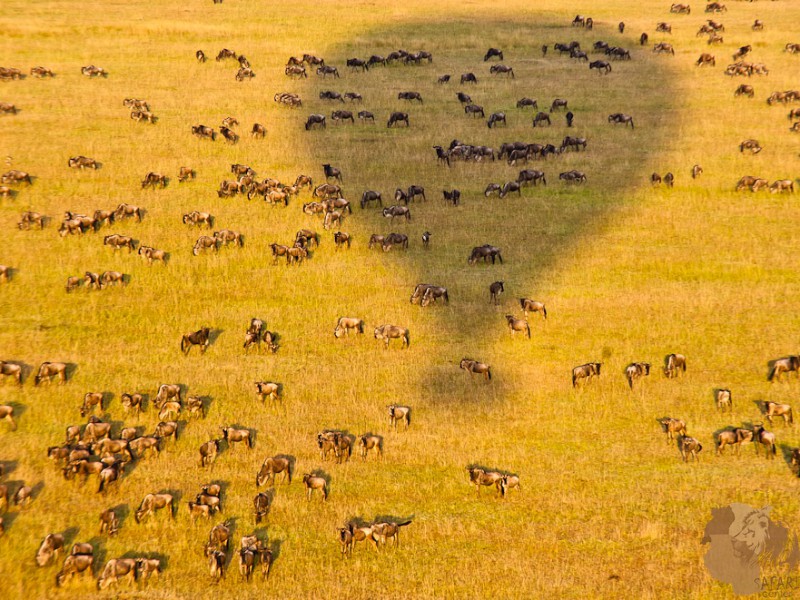
Enjoy balloon safaris
Embark on a balloon ride
Lets have a look at what happens before, during and after a balloon ride. The daily flights follow the same pattern taking off at dawn although the flight path is up to the winds. At around 5:30am, the driver picks up the passengers from their lodge or camp and takes them to the site. The mornings are slightly nippy. The most dreadful thing about flying in a hot-air balloon is getting into the basket. It lies on its side before inflating the envelope. Then the passengers crawl into the basket while lying down with their knees drawn to their face and head sticking out a little.
1) Heating the balloon
Before long the fuels heat sup the air in the balloon and it becomes hotter than the air outside, which gives it the lift to fly. Gradually, the basket rises from its side and rests on its bottom. The crew holds the basket with ropes while they fill the balloon with more hot air.
Take-off
The hotter the air, the faster it ascends. The balloon ascends with the rising sun for a 90-minute journey of 12 km. There is much to smile about because the sun is just beginning to bathe the horizon in orange and make its presence felt. The balloon alternates between flying 300 meters above ground or skimming treetops for a panoramic view of the Mara plains because it is highly manoeuvrable. Occasionally, the balloon plumbs down to around 50 feet to get a closer look. The pilot controls the flying height.
Ear barotrauma
After about an hour of the balloon ride, just about the time of descent of the balloon for landing, along with the exhilaration some people feel a slight discomfort or stuffiness in the ear. This is a common problem of which people need to be aware. It is the minor unease or clogging in the ears that can be a bit of an annoyance. But it almost always goes away on landing. This uneasiness or medical ear condition is ear barotrauma. People also call it aero-otitis or airplane ear.
Susceptible people
Barotrauma occurs mostly during air travel. During the balloon ride when the altitude changes, occasional ear barotrauma is common among many people. People who suffer from upper respiratory infection, congested nose due to common cold or allergies are slightly more inclined than others to feel such awkwardness or discomfort when they do the balloon safari. Hence, such activities, if possible, should be avoided until the allergy or infection is under control. But if it is a common cold, then there is no harm in doing a balloon safari. However, it is highly recommended to use personal discretion when deciding whether to go on a hot-air balloon safari or not.
Symptoms
The most common symptoms of mild to moderate ear barotrauma are an uncomfortable pressure inside the ear, dizziness, general ear discomfort, ear pain, a sensation of clogging in the ear, stuffed feeling or muffled hearing. Additional symptoms include a ringing in the ear, feeling of pressure as if underwater, nosebleed, haemorrhage from the ear and eardrum injury. Vertigo or hearing loss occurring during descent is due to an air bubble that has formed in the ear.
Spontaneous recovery
Ear barotrauma is usually a temporary medical condition that does not need much attention. The majority of people who experience ear barotrauma will heal naturally and recover fully without any permanent hearing loss or medical intervention. Loss of hearing from ear barotrauma is always temporary and reversible. So, the air pressure equalization occurs with little or no effort.
Quick self-care measures
Ear barotrauma can be relieved by several manoeuvres. Self-care such as yawning, swallowing or chewing gum allows the flow of air into and out of the middle ear, which helps equalize pressure in the eardrum. Gargling with warm salt water can also decrease the risk of experiencing barotrauma. Other steps to prevent or lessen barotrauma symptoms include practicing breathing exercises until the ears pop. Hold the mouth closed, pinch the nose shut, and blow gently through the nose, during the time of descent of the balloon, which will force air through the Eustachian tube and facilitate the process. If everything fails, taking antihistamines or decongestants in consultation with the doctor before the flight can do the trick. Prevention of air barotrauma using vasoconstrictors or nasal decongestants does work with some people but not with others. So it can give mixed results. Also, pressure earplugs claiming to prevent barotrauma are available in many pharmacies. Quite contrary to conventional myth, earplugs have no adverse effect on the Eustachian tube. Simple measures such as these can open the ears after flying and equalize the pressure bringing immediate relief. With a mild case, the symptoms should go away with these actions shortly after landing.
Causes of discomfort
Understanding and knowing what causes barotrauma in the ear when doing balloon safaris can eliminate anxiety to a large extent. Under normal circumstances, the air pressure outside the body is most often the same as that in the middle ear. When the pressure matches with that of the middle ear, the tympanic membrane vibrates, and we hear a clear sound. But at the time when balloon flights take off or land, there occur changes in the altitude. For example, when a balloon lands, the pressure inside the cabin rises because the weight of the air is higher on the ground. These changes cause imbalance in the air pressure between the air-containing space in the middle ear and the surrounding ambient environment. In other words, there is a pressure difference between the internal parts of the ear and the external environment. Moreover, during the flight, fluids do not compress, but air does. Hence under these pressure changes, the fluid-containing ear spaces do not alter their volume, but the air-containing spaces do. This dynamics in the alteration causes the eardrum to become tense resulting in dull hearing and damage in the ear. Hence, altitude changes are the common culprit of this condition.
Inside the ear
The eardrum separates the canal of the ear from the center ear. The small space behind the eardrum connects the back of the nose and throat through the Eustachian tube. If there are differences in the air pressure within and outside the ear, or it changes rapidly, it can hurt the eardrum. Inside the ear, there is an air-filled space called the tympanic cavity. The air that fills this space is absorbed into the lining of the middle ear and flows back up through the tube. This way the Eustachian tube connects the tympanic cavity in the middle ear with the throat and back of the nose. Ironically, this pipe also connects the middle ear to the outside world. So, the middle ear is separated from the external world by the Eustachian tube anteromedially and the tympanic membrane laterally. Thus, this conduit facilitates air to enter when pressure equalization is needed. And this connection helps maintain and regulate air pressure by keeping the air on either side of the eardrum the same. This way, equalization or normalization of pressure occurs through the soft tissue called the Eustachian tube that extends from the middle ear space to the back of the nose. Hence, it is the Eustachian tube that helps to restore equilibrium during pressure changes holding the ears in their normal state.
2) During balloon ride
To equalize, the pressure inside the middle ear also has to increase, which means air has to travel up the Eustachian tube into the middle ear. In case of a partial or complete blockage in the pipe due to a tumour, scarring, infection, allergy or common cold, air cannot pass through the middle ear. And the pressure on the outside remains different than the pressure in the middle ear. This obstruction in the tube leads to an inability to obtain equalization when the pressure changes fast during the balloon descent. In this case, the pressure differences create a vacuum, and the eardrum is stretched and sucked inward. And that is how variations in the air pressure between the outside world and the middle ear lead to discomfort, injury and even hearing loss. In essence, ear barotrauma occurs when this tube does not function adequately.
Repercussions
If the Eustachian tube stays blocked, the middle ear can fill with clear fluid to try to equalize the pressure. This fluid called the serous otitis media that comes out of blood vessels lining the inner ear can only drain if the tube is open. In other words, prevention of ear barotrauma involves keeping the Eustachian tubes open through quick self-care measures mentioned earlier. Otherwise, the pressure difference experienced during a balloon safari can create hearing difficulty and an uncomfortable feeling in the ear. While this is not harmful, if the pressure difference is significant, in some cases, it may bruise the eardrum or rupture the oval window and lead to a temporary hearing loss. And in more severe cases, if the tubes remain closed without draining, severe symptoms such as fluid leakage, tissue swelling and bleeding can happen. If it progresses without treatment, these symptoms may intensify. If left untreated further, it may cause a ruptured eardrum, ear infections, hearing loss, chronic dizziness, pain, bleeding from the nose and ears or feelings of unbalance. An active attempt to equalize the pressure at this point will be futile and may injure the inner ear. Under these circumstances, only the doctor can provide treatment and tips to help prevent any unnecessary complications.
Complications
Complications due to barotrauma may arise in some people. The magnitude of the injury depends upon the speed and degree of the ambient pressure changes. It is essential to be aware when to seek medical treatment. If the tube demonstrates chronic problems such as significant bleeding or pain, then the likelihood of healing is drastically reduced. Such symptoms that are recurring and persistent could be a sign of chronic or severe ear barotrauma.
Medical attention
If symptom-reducing measures do not bring relief or if ear barotrauma does not go away on its own, it is better to see a doctor, as a medical examination may be required. If ear pain or dizziness persists even after the flight, barotrauma is suspected. However, detection of ear barotrauma requires a physical examination.
Diagnosing ear barotrauma
The diagnosis is carried out using ear inspection, as well as hearing and vestibular testing. A look inside the ear using an otoscope can reveal changes in the eardrum. The doctor may also squeeze inside the ear to determine if there is blood build-up or any fluid behind the eardrum. In case there are no significant findings on check-up, often the situations that surround the symptoms will give clues towards the diagnosis. Therefore, medical analysis takes the history of the past few days or weeks into consideration. Ear barotrauma that is the result of a ruptured eardrum can take at least two months to heal.
Last resort measure
In extreme cases of ear barotrauma and if everything fails, surgery may be required and could be the best option for treatment to prevent permanent damage. This process stimulates airflow into the middle ear. People who frequently change altitudes or often fly for a living use it. The ear tube will remain in place for up to twelve months. Another option involves a tiny surgical slit cut into the eardrum that allows the pressure to equalize by removing any fluid. But this may not be a permanent solution, as the slit will heal quickly.
Treating ear barotrauma
Treatment for middle ear barotrauma consists of keeping the ear dry and free of contamination that could cause infection. In severe cases of infection or inflammation, the doctor may prescribe a steroid or an antibiotic. Decongestants and topical nasal steroids can be taken to unblock the Eustachian tube. And the presence of pus in the ears may need the use of appropriate antibiotics.
3) Time to land
As the balloon cools, it dips lower, descends and lands. Upon landing, the pilot makes a landing announcement. From a distance, a few guides who have been in touch with the pilot come to retrieve the passengers from the landing site. And the passengers disembark after an hour-long balloon safari. Luckily, getting out of an upright basket is less dramatic than getting in. The driver then takes the passengers to the breakfast site a short distance away from the river on a grassy plain.
Breakfast in style
There is no better way to end a memorable morning of balloon wildlife safari, sailing over the beautiful savannahs and vast plains of Kenya than with a champagne breakfast. And this is how it goes. At the reception site, the crew and the passengers of the hot-air balloon flight toast champagne. As part of the toast, the pilot recites the balloonist’s prayer and offers an elaborate breakfast. Hence, every balloon safari ends with one that includes boiled eggs, bacon and egg quiche, spinach quiche, sausages, pastries, fruit and yogurt. It is cooked either over the balloon’s burners or on wood fires. Hors-d’oeuvres and mimosas invariably accompany the breakfast. The food is delicious as is the champagne. For engagements and weddings, additional accompaniments are provided to make the experience special.Then they are presented with a certificate to mark the glorious occasion. After the meal, by mid-morning, the guides slowly drive the passengers back to the camp or lodge.
Champagne breakfast legacy
There is an interesting story behind the champagne breakfast celebration that follows the hot-air balloon wildlife tour in Kenya. It dates back to the time when the innovators staged the first few hot-air balloon flights in the late 1780s. The first legendary aeronauts in the history of hot-air balloon were Le Marquis d’Arlandes and Jean-Francois Pilatre de Roziers. In 1783, after successfully flying over Paris in France they celebrated their achievement with champagne. This long-lived tradition has been preserved in Kenya till date.
Alternative tradition myth
There is another fascinating tale behind the champagne breakfast feast. Back in those days when hot-air balloon was a novelty, the noble people of France used them as a status symbol. To own a hot-air balloon was considered to be exotic. As balloons became a fad, the French aristocratic families soon learned that the farmers did not much like people landing balloons down on their land. The local peasants were afraid because the aircraft with the smoke that powered it looked like dragons. But it appeared more likely that the farmers did not want the balloons crushing their crops. Hence, often in the pioneer times of ballooning, when seeing an object descend from the sky, the local farmers would grow afraid or angry and destroy the balloons, attack the balloonists and chase them off. The balloonists had to find a way to circumnavigate the wrath of the local farmers. And they did stumble upon an amicable strategy that put the farmers in the pockets. In the olden days, the pilots used to carry a bottle of champagne along with them to enjoy on the flight. But instead of drinking it, they used it as a goodwill offer to the farmers whose field their balloon had landed. A tradition was being born. Henceforth, the balloonists carried champagne on their flights and toasted it to the spectators to put their minds at ease. This gesture convinced the local farmers that they were harmless and not dragons as were previously believed. The champagne gift acted as a sincere apology for destroying the crops. This tradition still stands today.
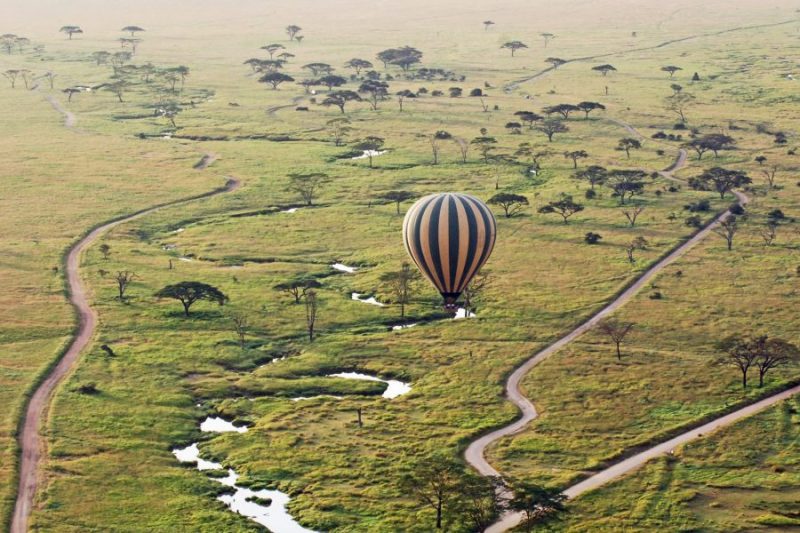
Enjoy balloon safaris
Weather conditions
The weather plays a significant role in the aviation industry for all types of aircraft but more so for a simple hot-air balloon. It is perhaps the most sensitive aircraft, more than any other type. A great deal of time and energy of balloon pilots is spent watching, obtaining and analyzing the conditions of the weather to determine if it is the right moment to soar high in the skies. They take the weather conditions very seriously. Long range forecasting is typically for four hours. But sometimes the weather observation for the one-hour balloon safari in Kenya starts the previous day. Inevitably, some flights will be rescheduled or cancelled on account of the weather. Even though the decision not to fly seems a logical one for the balloon pilots, it may not sound logical for the passengers. They do not understand the reason behind the postponement or cancellation of the flight when no storm or rain seems to be happening in the area. This decision is often made based on a prediction, which remains an imprecise science, despite the many advances in the weather forecast. Wind, heat, rain and storm are the four factors involved when predicting the climate of the day.
Wind
The critical factor in safe ballooning is wind, affecting every phase of the safari. Cancellation of balloon safari happens more due to wind than for any other reason. But wind confuses not only the balloon pilots but also sometimes the passengers. Perhaps the most confusing aspect is that sometimes there is not even the slightest breeze on the ground and the balloon safari gets cancelled citing unfavourable wind conditions as the reason. But there is logic behind this. The wind’s direction and speed dictate the flight path and the distance the balloon travels. Balloon pilots think three-dimensionally. They consider what the wind is doing at different altitudes, not just on the ground. For example, they look at winds at 9,000 feet as well as winds on the surface. Although the balloon does not fly at that high an altitude, it gives a good indication of the turbulence and strength of the winds on the surface later on. Similarly, winds aloft 20 miles per hour are enough to reschedule a flight. In other words, the high-altitude wind is a crucial driver in deciding whether to fly or not even if there are no winds on the surface. But there are implications of the wind speed and direction on the surface level as well.
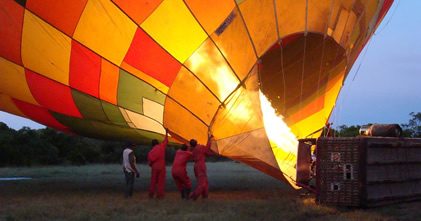
Enjoy balloon safaris
Inflating the balloon
The balloon fabric is a giant sail. At the time of inflation, when it is filled up with cold air, it is tied off to prevent it from dragging downwind and rolling around violently. On a windy day, if the winds exceed the maximum limit, it becomes impossible to fill the balloon.
On the ground
Wind caves the side of the balloon while it is on ground and the resulting sail effect places an enormous load on both the basket and the fabric. It relies on the basket’s friction dragging along the ground, as it does not have brakes. High wind speeds mean that it needs a larger area to land because the basket skips, bounces and drags before it eventually lay over on its side. Moreover, balloon’s speed on the ground is a good indicator of the speed it would be flying in the air.
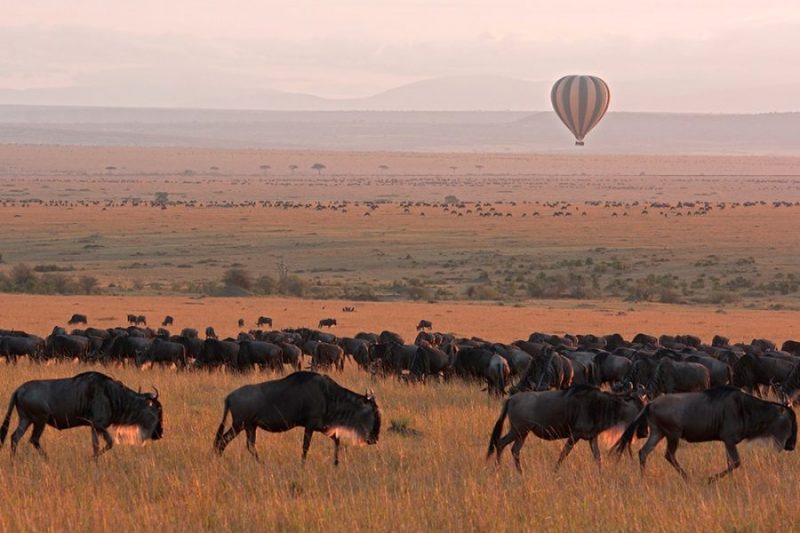 In the air
In the air
In flight, robust winds can take the balloon farther than it has room to fly because the winds aloft are stronger than at the surface. If high winds carry it into areas that are not fit for landing such as metropolitan areas, restricted airspace, vast expanses of forest and massive bodies of water it can be challenging.
Safety comes first
Light and stable winds are the best conditions under which balloons can fly. Safe winds are between 4 to 9 miles per hour. But at times, even a gentle gust of breeze can cause it to drag around on the ground. This spectacle may be pretty impressive to watch but not much fun when passengers are waiting to embark on it to start their safari before it is too late.
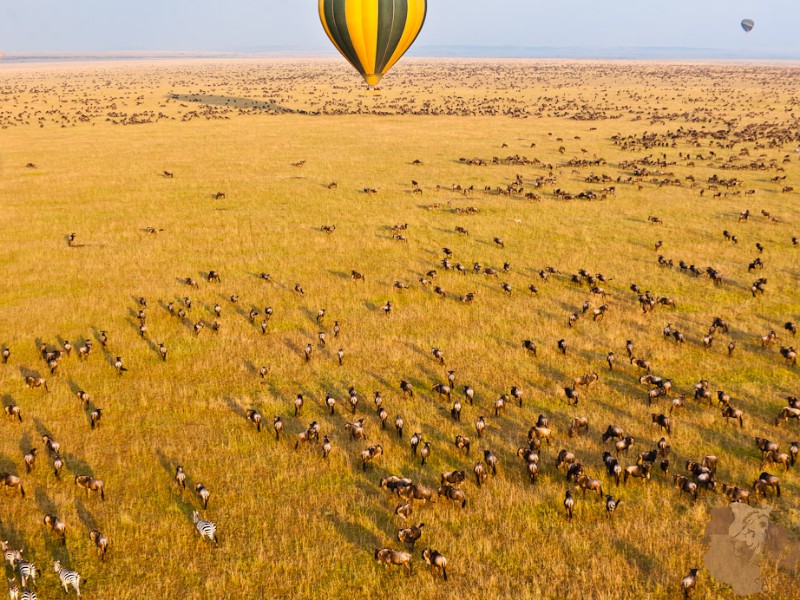 Heat
Heat
Since balloons fly by changing the inside temperature using heat, the outside air temperature affects flight performance. When the air inside is heated, it becomes less dense and hotter than the surrounding outside air. Warm air is light, and this causes the balloon to float upward. Hotter the air inside, higher it rises. To fly, it needs a temperature around 140 degrees over and above the outside air temperature. Hence, in cold weather conditions less heat is required to operate and, conversely, in hot climates, it takes more heat.
Size determines lift capacity
The lift capacity of the balloon depends on the inside heat as well as its size. Smaller balloons have less lift capacity and need a higher interior temperature to fly. The maximum operating temperature for most balloons is 250 degrees Fahrenheit. That leaves a low margin for manoeuvring on a hot day.
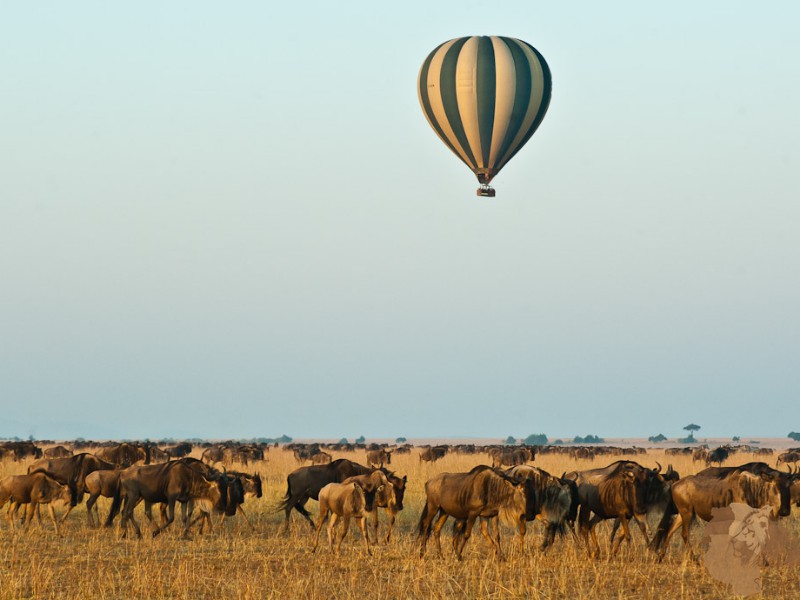 Rain
Rain
When the balloon is inflated, the top of the balloon reaches 100 degrees centigrade. But it cools down when the rain falls. To keep it in flight the pilot has to put in additional heat from the burners to compensate for the heat loss. If not, the balloon will descend rapidly. Raindrops falling on the envelope, especially if the rains are heavy, also make it weightier. This cooling down and the weight of the balloon can damage the balloon fabric. Also, it makes it harder for the pilot to control the balloon. In addition, when it rains, water runs down on either side of the balloon envelope falling into the basket and passengers and makes for a messy landing because the mud ends up in the shoes of the passengers after the hot-air balloon flight. Hence, balloon safaris cannot be done in wet conditions.
Storm
An airplane can turn away from a storm, but a balloon gets drawn into it. The winds can accelerate and head toward a blast and flow out of it. These gust fronts can occur up to 100 miles away and create situations that are dangerous.
Nature dictates
Balloon safaris are at the mercy of wind, heat, rain and storm. Even under all these weather conditions, legally, there must be at least 1 to 3 miles of visibility to fly. All said and done, a hot-air balloon safari in Kenya can be cancelled or postponed to another day if the pilot thinks that it will be uncomfortable for the passengers.
When and how to book
Balloon flights operate throughout the year. But the optimum time to do a balloon safari in the Mara is when millions of animals navigate the plains during the annual wildebeest migration. Dubbed as the eighth wonder, it takes place every year from July to October when some two million wildebeest, zebra and gazelle migrate from Tanzania to Maasai Mara looking for rain-ripened grass. The animals appear like ants scattered across golden biscuit dough. But the beasts are not randomly roaming. There seems to be a pattern to their trail. And they feed as they move across. The deafening sound of hot air from the balloon sends the animals scampering. However, when they realize that they are out of danger, they soon fall back into formation. During the short rains in November, the herds migrate and soon make their way back southwards to calve, until the following year when they migrate again. However, even at these times, because the animal movements and the wind are unpredictable, there is no guarantee of knowing what animals one can spot. A balloon safari can be booked through practically any camp or lodge, usually at short notice if staying a few nights. But during peak season, it might be worth making the booking in advance through the tour operator.
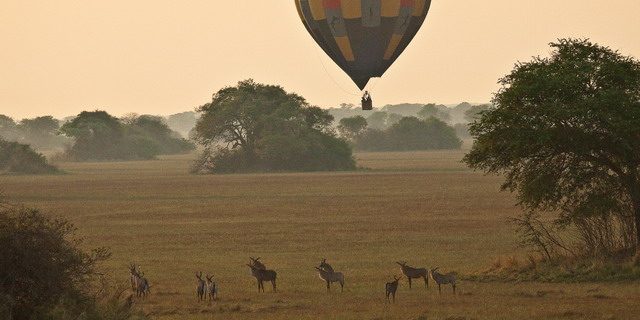 Tourists and adventurers
Tourists and adventurers
Tourists have used hot-air ballooning all over the world for more than a century now. But there is another breed of daredevil adventurers who use it push the envelope thereby gaining fame and notoriety in the process. Two such courageous individuals are Richard Branson and Alan Eustace from two different walks of life.
Richard Branson
A boating stunt saw the famous English industrialist Sir Richard Branson successfully cross the Atlantic Ocean and beat the world record. When the furor of that feat naturally died down in a few years, Branson decided to try something more adventurous. He set his sights on a dangerous pursuit of crossing the ocean, this time not on a boat but a hot-air balloon, and was determined to win. Three such crossings were made previously but in helium balloons. So in its essence, the ardent love for hot-air ballooning as a hobby began in the 20th century towards the 1980s with Sir Richard Branson. It was at the time when business at Virgin Atlantic and Virgin Records were booming that he embarked on a journey less trodden pursuing challenges of an engineering and physical nature.
Crossing Atlantic Ocean
Branson trained for three years because he had barely flown a balloon before and knew little about ballooning. He practiced balloon flight, skydiving and water survival religiously with fortitude and grit in a jet stream, which carries winds of 200 mph. This feat was never endeavoured before as no balloon had ever flown over 70 mph. On 2-3 July in the year 1987, two hundred and four years after the pioneer flight, businessman and record-chaser Richard Branson, and his co-pilot, an adventurous and experienced balloonist, Per Lindstrand, channelled the Montgolfier’s spirit and ambition. Convinced by Lindstrand that a hot-air balloon flight was both achievable and safe, the two men boarded the Virgin Flyer in Sugarloaf in Maine to cross the Atlantic Ocean to Limavady in Londonderry, Scotland, in a hot-air balloon.
First part
On the 1st part of the journey, during take-off, the fuel tank of the balloon got lost. That unexpected holdup put a considerable dent in the confidence of the balloonists at the time of ascent. However, after the initial setback, luckily, there were no significant hitches along the way. Everything went as planned for Per Lindstrand and Richard Branson as they soared serenely on the Atlantic jet stream at 130 miles per hour.
Second part
The 2nd part of the hot-air balloon flight from US to the UK across the Atlantic Ocean was far from safe. They got into trouble immediately after the Virgin Atlantic Flyer crossed the Irish coast. With fog in Scotland, low clouds had forced them to bring the balloon down and find a landing spot even though the wind would have made it possible for them to reach their goal at a peninsula on the coast called the Mull of Kintyre.
No bon voyage
The duo took off again and regained the sufficient altitude to avoid power cables. After 41 minutes in the air, the balloon hit the ground in Northern Ireland near Limavady, scraping along the ground while losing two fuel tanks. Then the billowing silver and black aircraft, smoothly flew east before it descended. But the hot-air balloon hit un-surmountable difficulties again as they attempted to land. Just like the first effort a few minutes ago, this hot-air balloon landing, was problematic too. The mechanism failed to eject the pressurized two-man capsule, which allowed them to survive at high altitudes. After the unsuccessful attempt to land it was clear that a clean landing appeared more and more unlikely. The two decided to go on flying over the Irish Sea while they thought about a solution. But once it was over water again, the balloon bounced along and repeatedly dipped into the sea.
Leap of faith
When the balloon was 60 feet above, Lindstrand advised that they should jump. Lindstrand went first, and as soon as he left, the balloon rose again to great heights. The reduction in weight caused the aircraft to spring back into the air with Branson in the capsule. He was left to fly it alone when Lindstrand bailed out by leaping into the deep waters. At that crucial decision-making juncture, Richard Branson did not expect to come out intact or even alive. Although he contemplated skydiving out of the capsule, a near-death experience he had during training dissuaded him. Interestingly, Branson had a brilliant idea to use the hot-air balloon as a life-saving parachute. He wore his oxygen mask, rode back down toward the ocean and jumped off once the aircraft was 50 feet above.
Rescued from sea
The disabled hot-air balloon went down not too far away from the landing target on the coast of Scotland as the two adventurers were in the sea. A helicopter that was part of the Royal Navy rescue team quickly plucked them out from the water after Lindstrand reportedly swam against strong currents for more than two hours in the cold without a life vest. While Lindstrand had a concussion, Branson looked and sounded fit as he described his leap.
Finally made it
As planned, Branson and Lindstrand victoriously achieved the ocean-crossing record in a hot-air balloon. They cruised for around 37 hours in a record-breaking distance of 2,900 miles after the twosome took off from Maine to cross the Atlantic in a hot-air balloon for the first time. They made it but lost control when trying to land in Ireland. The duo ended up jumping out before the bird crashed. Long story short, they became the first people in the ballooning history to cross the Atlantic Ocean in a hot-air balloon. A year later, Per Lindstrand set the record for the highest solo hot-air balloon flight ever recorded at feet of 65,000.
Largest flyer ever
The Virgin Atlantic Flyer that Branson and Lindstrand used at the time was the most massive balloon ever made or flown. It was the product of Thunder & Colt built with technological advances in hot-air ballooning. The aviators, Richard Branson and Per Lindstrand, oversaw the designing of the craft, which was in Virgin colors. The silver-coloured envelope of the vessel had an impressive capacity of 2.3 million cubic feet. It was a laminate material on a skeleton of webbing and load tapes, with solar heat absorption fabric around the bottom of the Virgin-branded vessel. It used solar power to enhance the effect of gas burners heating the air. The purpose-built Flyer is now in Duxford at the Imperial War Museum.
Crossing Pacific Ocean
After many years of intense training to be a hot-air balloon pilot, Richard Branson went through a harrowing experience during the tail end of the trans-Atlantic ballooning in his pursuit to break the world record. It was an unforgettable ordeal that he swore off, but the bug hit him again almost immediately after that. Despite the messy balloon flight that would have cost him his dear life, he refused to budge. After arriving home from the hospital, Branson’s restless thoughts soon turned to other conquerable adventures. The great crew of Per Lindstrand and Richard Branson paired up again to cross the Pacific Ocean in a hot-air balloon. In 1991, they traveled from Japan to Canada at a speed of 245 mph covering a distance of 6,700 miles. The pair broke the world record the second time when they became the first to cross the Pacific Ocean using a hot-air balloon. The daring balloonists broke this remarkable world distance record for cruising the Pacific Ocean in 47 hours. Four years after that, Steve Fossett became the first person to complete the Transpacific hot-air balloon route by himself, traveling for four days from Korea to Canada.
Hazardous but lucky
Branson made four more attempts over the next seven years at achieving the most challenging ballooning ever. However, every single time he failed miserably but in spectacular style surrounded by the public. The trip with the American millionaire Steve Fossett and Lindstrand was an unmitigated disaster. In their unrelenting eagerness to beat the distance records, they fell out of the jet stream and landed in Hawaii. It was by sheer miracle that they found their way and flew across to the Canadian Arctic, the final destination. The world-famous aviators were indeed lucky to have bolted with their precious lives. Ultimately, the group broke the world records for balloon flight speed, distance, and duration.
Meeting peculiar accidents
At one time Richard Branson, Steve Fossett and Per Lindstrand crash-landed in the Sahara. They were then taken hostage by a warlord in Algeria, which Branson described was a luxurious kidnapping. Another occasion found the expedition team accidentally crossing the Himalayan Mountains near the Chinese border. As they came out of the other side, they encountered shooting threats from the Chinese Air Force. It took a few frantic calls on a state level from Branson’s secretary to sort out that debacle. This time Richard Branson was fortunate enough to have escaped from it against all probabilities. It was by far his luckiest outcome out of all the other treacherous expeditions ventured out until then.
Brand publicity stunts
Richard Branson’s numerous adventures have raised the brand recognition and profile of the Virgin Group. The business tycoon recognizes it too that his boating, ballooning and other world records have made Virgin a global brand. These scenes and others illustrate Branson’s drive to do things humans have never done and participated in before. It is always virtuous to muster courage in death and failure to implement new inspiring ideas. That kind of swagger in itself is positive that never fails to bring a fresh zest to the purpose of life. But when Richard Branson takes chances, he neglects to take the necessary steps to mitigate potential risks. Hence, the media and press have criticized these extreme bravados as mere publicity stunts. He denied that he did them for any reason other than pure curiosity and joy at the challenge.
Boldly moving on
With 2 ballooning firsts across the earth’s oceans, breaking the record in circumnavigating the world in a hot-air balloon became Branson’s next shiny passion for pursuing. But he gave up this pursuit because Bertrand Piccard and the British balloonist Brian Jones took the honours in March of 1999. Sir Richard Branson has set world records so far not only in ballooning but also in three other modes of transport. They are boating, kite surfing and amphibious vehicle, each one of its kind in their ways. For Branson, not all of his adventures are equal as each time was a different experience.
Spacing it out
The CEO of the company who owns an international airline also plans to head into space. But astronauts spend years in training before being considered for a space mission. They are run through every piece of equipment and memorize every contingency plan. They have a complete knowledge of what they can do to keep safe should problems arise and how their spacecraft works. The tragedy of 1986 shows that spaceflight cannot be rushed for the sake of excitement because the consequences can be fatal. So, there is way too much work to attend to for Branson before he makes it there and conquers the other world. However, the fascination with hot-air balloons continues, even without the publicity by the likes of Lindstrand and Branson in their constant chase of world records. Soaring in the heavens at extreme heights and going where the wind blows has never been so appealing.
Alan Eustace
Not many people in the world recognize the name Alan Eustace from the ballooning industry. He was Google’s vice president of engineering and search. Before that, he worked on chip design and architecture projects. He is also a skydiver and has completed 500 jumps. Eustace exudes a mild demeanour, but beneath that is an engineer who likes challenges. Hence, his love and passion for space travel led him in 2014 to be the highest skydiver. He ascended via balloon to 136,000 feet and returned safely with a parachute and a spacesuit. It did not garner the same press attention that, Felix Baumgartner, the former record holder got because Eustace’s motives were not prestige or fame. He just wanted to sort out some engineering problems. Experienced space engineers joined his team for this mere satisfaction.
Small nagging problem
An avid pilot and skydiver, Eustace had just completed a project in 2010 showing that it is possible to free-fall from a business jet. All other balloon ventures had relied on gondolas or capsules to convey people to the stratosphere. But Eustace had the gut instinct that the journey could be made simpler. He believed that it is possible to scuba the stratosphere by carrying all that is necessary for survival in a wearable system. This problem kept nagging Eustace. So, he embarked on a trip to revolutionize high-altitude flight. Eustace came up with the idea in 2010 to make an outfit that would enable people to survey high-altitude areas of the earth’s atmosphere.
Open up stratosphere
The troposphere and the stratosphere divide the earth’s atmosphere. The troposphere is from rock bottom and upwards up to 7 miles. The stratosphere starts from where the troposphere ends up to 31 miles onward. It was this region that he wanted for exploration. But the stratosphere could hurt a human being due to lack of oxygen, freezing temperatures and low pressure. Moreover, they also need to be shielded from the changes in air pressure and temperature, the intensity of speed and the friction of air.
Founded project StratEx
Alan Eustace contacted Paragon Development, a contractor selling life support systems for extreme conditions, to head a project to tackle the challenges. It turned out that MacCallum, who was running Paragon Development, had also been pondering the prospect, with the goal of founding a high-altitude tour operation. The two planned to develop a new system by way of a record-breaking space jump and called the project StratEx.
Funding the project
The Red Bull-sponsored team and Felix Baumgartner around the same time were revving up for their record-breaking jump. Eustace was worried that the publicity that Red Bull drew would force him to cut corners. So, he chose to fund the project himself and assembled a team who swore to secrecy. The spacesuit company Dover joined him as a partner.
Team building exercise
Paragon development, Dover and a few senior space engineers formed the Stratex team. After assembling them, Eustace spent years solving the problems of stratosphere exploration and a year and a half to get ready for his historic jump. Their mission was to return human beings from the edge of space to the earth using minimal life-support systems.
Hairy problem solved
Eustace overcame many engineering challenges to build a technology from scratch. The drogue itself presented the most significant setback, one that nearly killed Joe Kittinger in 1959. For the first part of his jump, the chute that was designed to deploy his drogue flapped around un-inflated wrapping his neck around with it. Without the drogue, Joe went into a spin and blacked out, only surviving because his main chute automatically deployed. Such past obstacles and, at times, massive technical challenges of the mission grew in number and size. But in the end, the StratEx solved every problem ingeniously.
Testing, testing, testing
During the test flight from a typical height for recreational skydiving, many things went wrong. Firstly, Eustace almost could not deploy and steer his parachute. Therefore, he could not stop spinning, which can leave jumpers unable to open the chute or cause them to lose consciousness. But he eventually survived the fall and landed miles away in the desert. Felix Baumgartner, the previous record-holder high-altitude skydiver while breaking the record in 2012 also experienced uncontrollable spinning, and it nearly killed him. After the flight, Eustace’s team added more features that would stop him from spinning. Secondly, the team had not anticipated Eustace’s limited capability of motion in the suit. As he passed through the door while exiting the plane, the suit’s GPS and communications antenna broke off. Therefore, the team could not talk to him to locate him. Fortunately, Eustace was spotted from the air by a military helicopter. The StratEx team had done dozens of safety tests and dry runs and put in thousands of engineering hours by the time Eustace was ready to make his leap. But running all the tests do not always prepare one for the things that could go wrong during the complete execution. Nevertheless, Eustace continued to exude a joyful attitude, and his dedication seemed unwavering.
Bon space voyage
On the 24th of October 2014, the team strapped Eustace to a balloon in a 500-pound spacesuit. Then he rode the balloon up and rose to an altitude of 25 miles above New Mexico, i.e., a height of 136,000 feet. Alan Eustace then leaped to earth wearing only a spacesuit after pulling a chord separating him from the balloon that sent him plummeting to the ground from the edge of the stratosphere at a speed of 821 mph. This feat shattered not only the sound barrier but also the previous high-altitude jump and skydiving records. Finally, Alan Eustace did indeed revolutionize the commercial space industry, and in the process, the door was opening to safer and cheaper near-space travel opportunity for ordinary enthusiasts. Alan Eustace continuously engages in such endeavours that reflect his nerves of steel. A free fall from the stratosphere at a speed that can be life-threatening to a human being may not be a thing of the faint-hearted. But a leisurely wildlife balloon safari in Kenya is not only safe but also luxurious and affordable.
 World famous hot-air balloon spectacles
World famous hot-air balloon spectacles
The international event of the Lorraine Mondial Hot-Air Balloon Festival has been gathering in a former NATO airfield in eastern France at the Chambley-Bussieres Aerodrome ever since the establishment in 1989. Hundreds of hot-air balloons of different colors, shades and hues soar to new heights at this international balloon gathering. For many years, the balloon festival has offered the aligned take-off of balloons, which is already a global premiere. Philippe Buron Pilatre, a descendant of Jean-Francois Pilatre de Rozier who was an aeronautics pioneer in the 18th century, is the organizer of the event. Philippe who has been piloting balloons since 1979 is also the founder of the balloon festival and continues the family hobby and tradition.
Beating world records
The Lorraine Mondial Balloon Festival held on the 31st of July 2013 on the Chambley-Bussieres airfield was record-breaking. The balloons rose to the skies of eastern France in an attempt to set a record for the most number of them in the air. But that annual balloon festival saw the breaking of two world records, both at the same time. The first world record was when 408 balloons were sent soaring into the sky within an hour. The second world record was when 391 of them formed a line on the runway and took off into the air together. This feat indeed broke the record for the most substantial number of hot-air balloons launched all at once.
Painting the sky
In an attempt to beat the most significant take-off world record, participants of the 408 hot-air piloted balloons, with 391 of them all in a row, lifted off synchronously and filled and brightened up the sky. Unsurprisingly, and as can be imagined, the hot-air balloon festival was visually spectacular. With bursts of different colors dotting the sky on a sunny day, it was like a pointillist painting in action. The media, as well as the photographers and videographers, were there to capture all the beauty. The blasting sound of hundreds of balloon burners was extraordinary. Time-lapse videos depicted the process from inflation of the balloon envelopes to take off.
Participants and attendees
Hundreds of thousands of balloon-enthusiasts attended the hot-air balloon festival in France. A total of nearly 200 crew and 1,207 balloon pilots took part in this international celebration. Balloon manufacturer Cameron was one of the participants at the hot-air balloon Festival in France. The founder of the festival complained that the airport authorities placed on hold various commercial flights planned over the few days of the balloon festival. He also lamented about the bad behaviour of some participants, especially when 20 balloon pilots deliberately landed on cropland instead of on lanes and roads, making local farmers furious.
The previous week
The 408 balloonists were not only in a festive mood but were also in a competitive spirit as they were trying to beat a record that was set just a week ago at the Chambley-Bussieres Aerodrome. The previous Saturday, at the same event at the Lorraine Mondial International Festival, a standing record was set when 343 balloons took off, beating out the earlier 2009 record of 329. The participants were all charged as they were determined to push the envelopes even further. No pun intended. In the end, their hard work and perseverance paid as they did manage to break the previous week’s balloon record.
Albuquerque International Balloon Fiesta
The 2013 ballooning event in France where 408 piloted-balloons went aloft within an hour broke a 2-year old record held by Albuquerque International Balloon Fiesta in New Mexico. The Albuquerque Festival until then was the epitome of the balloon show on earth in the ballooning industry. The earlier record was when 345 balloons ascended within an hour in 2011 on the day of the launch of the 40thAlbuquerque Balloon Fiesta. But the news of this coveted position aroused little competitive zeal from the officials of the fiesta, as the organizers of the Albuquerque Fiesta have no plans to reclaim the record and set a new one.
Guinness World Records
Guinness World Records has certified the world record for the first ascent of 408 balloons taking off concurrently. It published the official announcement of this remarkable feat on its website and social network. The Guinness World Records, through this recognition, formalizes that now Lorraine Mondial Balloon Festival is the biggest balloon gathering in the world, overtaking Albuquerque International Balloon Fiesta. It is an honour that the organization of Pilatre de Rozier shares with the principal partner, the Regional Council of Lorraine, and 175 communities and companies supporting the event.
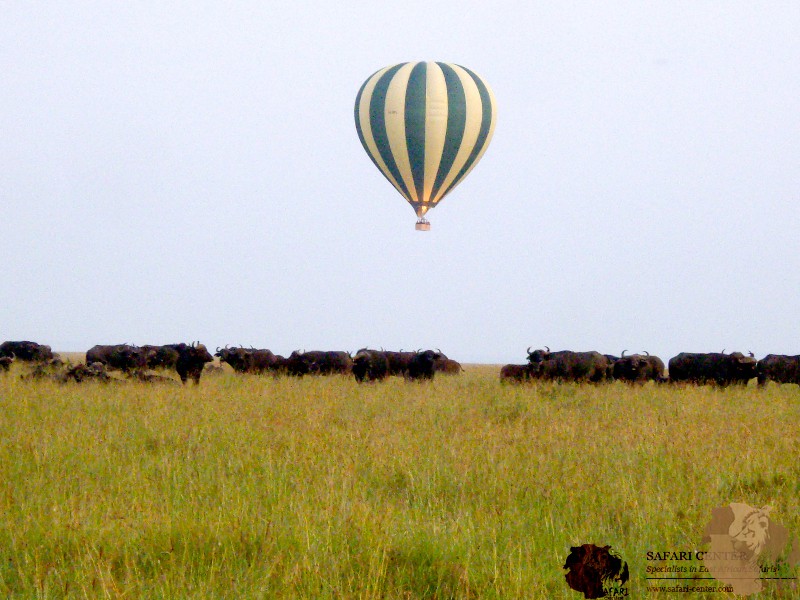 Festival versus safari
Festival versus safari
People gather every year at the former NATO airfield in eastern France at the Chambley-Bussieres Aerodrome to watch the hot-air balloons in operation. While at the Lorraine Mondial International Balloon Festival in France people watch it from bottom up, when it comes to wildlife safari they survey it from above. Kenya wildlife balloon safaris offer people a taste of what it is like to circle closer to the clouds and more. It also provides passengers with a spectacular view of the wild animals below in their natural habitat. The sound of the burners is kept to a minimum so as not to disturb the animals below as well as to preserve the ecological pristine of the vast plains. There is no better way to spot the Big Five in Kenya than flying over the savannahs of the country in a hot-air balloon.
Hot-air balloons promotes tourism
The spectacular wildebeest migration in Kenya is considered to be the eighth wonder of the world. It is when millions of wildebeests cross the rivers in search of water. Since the migration is a seasonal natural occurrence, unfortunately, it only happens twice a year. Tourists flock to this place to watch this environmental phenomenon, enjoying the marvellous sight from a hot-air balloon. And that is how they put to use the hot-air balloons of commercially in the tourism industry in Kenya.
Vantage point
Enjoying Kenya safari in a hot-air balloon is one of the most thrilling experiences. It gives a bird’s eye view of the vast savannahs of the game parks in Kenya. Witnessing the feral beasts of the earth against the backdrop of the tranquility of the savannahs is worth every penny.
To receive a colourful digibook about balloon safari with videos, images and text, please fill out the following form or simply email us on safaris@safari-center.com

